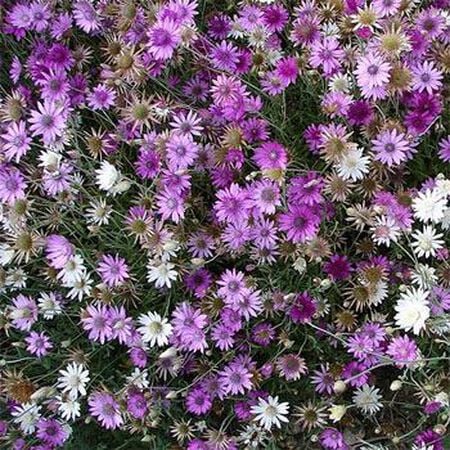Immortelle, Xeranthemum Seeds
Key Attributes
Key Attributes
Product Details
Weight
0.01Depth
0.15Height
4.5Width
3.25Botanical Name
Xeranthemum Annuum Double MixSeed Type
SeedAdditional Characteristics
Extended BloomsPacket
50 SeedsSow Depth
1/4"Breed
Open-pollinatedSun
Full SunLife Cycle
AnnualSow Method
TransplantCategories
FlowersDays To Maturity (# Days)
85Components
Growing Instructions
![]() Learning Download: How to Grow Xeranthemum
Learning Download: How to Grow Xeranthemum
Xeranthemum is most commonly known as the “mum,” and it is an excellent, easy-to-grow option for beginning gardeners. These flowers are seen most often in the fall time, but they can also be an excellent flower for the spring. Mums are easy to grow, making them an excellent flower for gardeners to try to grow.
Before Planting: Mums have a long growing season, so start seeds indoors six to eight weeks before the last frost date.
Planting: Once the mums reach a height of six to eight inches, you can transplant them outdoors.
Watering: Water mums frequently.
Fertilizer: Fertilize mums with nitrogen and potassium before the flowering phase.
Days to Maturity: Mums will bloom late summer to fall.
Harvesting: Cut the flowers in the early mornings or later in the evening, because this is when the flowers are fully hydrated. The best cut flowers are the ones in which the bloom has not yet fully opened.
Tips: Since mums can be grown as perennials, when winter arrives, cover the plants with several inches of mulch.
Shipping Schedule
Our Seed Promise
 "Agriculture and seeds" provide the basis upon which our lives depend. We must protect this foundation as a safe and genetically stable source for future generations. For the benefit of all farmers, gardeners and consumers who want an alternative, we pledge that we do not knowingly buy or sell genetically engineered seeds or plants.
"Agriculture and seeds" provide the basis upon which our lives depend. We must protect this foundation as a safe and genetically stable source for future generations. For the benefit of all farmers, gardeners and consumers who want an alternative, we pledge that we do not knowingly buy or sell genetically engineered seeds or plants.
The mechanical transfer of genetic material outside of natural reproductive methods and between genera, families or kingdoms, poses great biological risks as well as economic, political, and cultural threats. We feel that genetically engineered varieties have been insufficiently tested prior to public release. More research and testing is necessary to further assess the potential risks of genetically engineered seeds. Further, we wish to support agricultural progress that leads to healthier soils, to genetically diverse agricultural ecosystems, and ultimately to healthy people and communities.
To learn more about the "Safe Seed Pledge" please visit www.councilforresponsiblegenetics.org.

